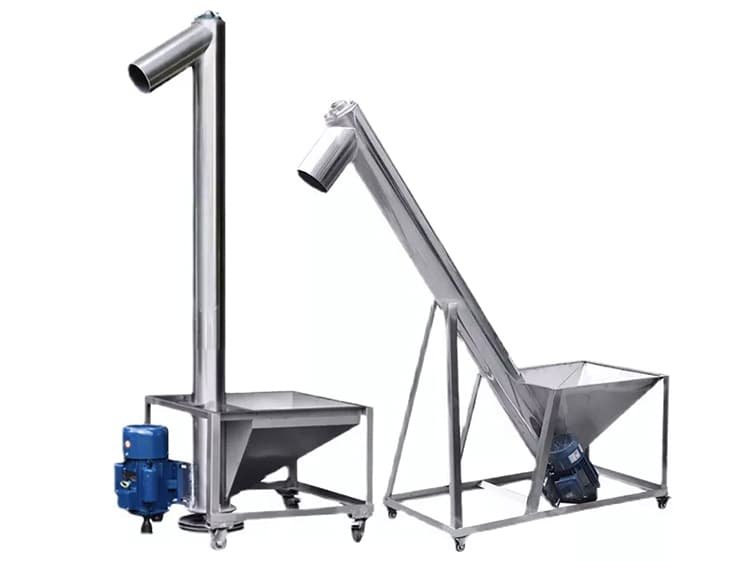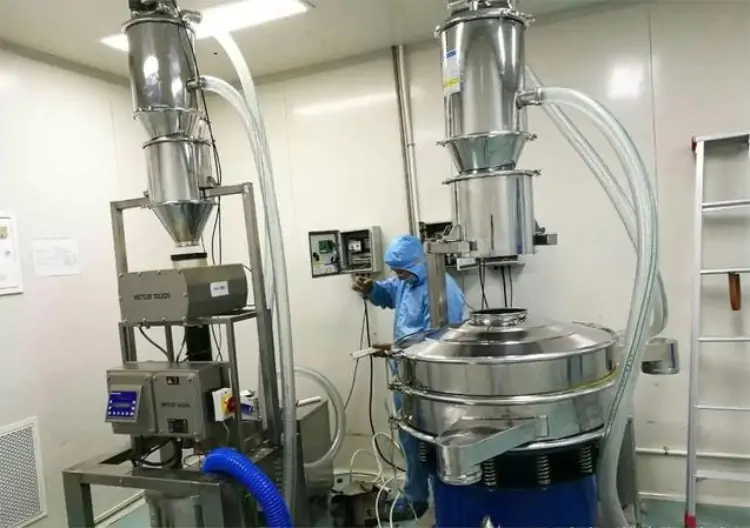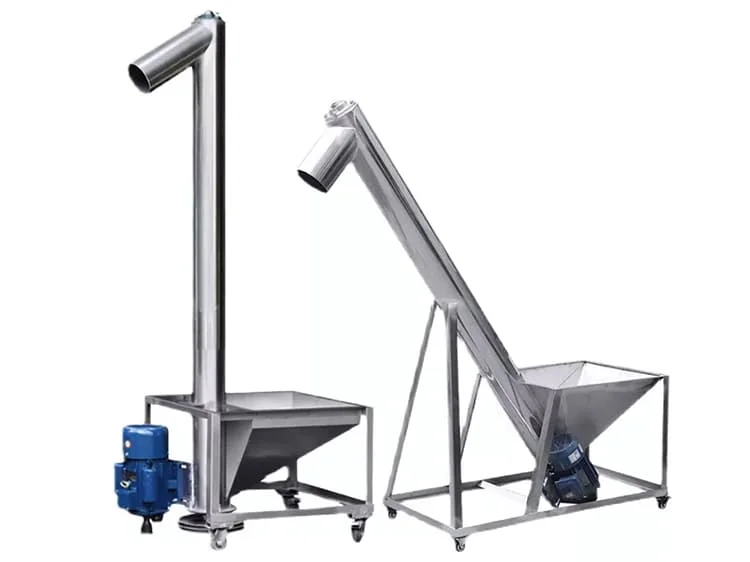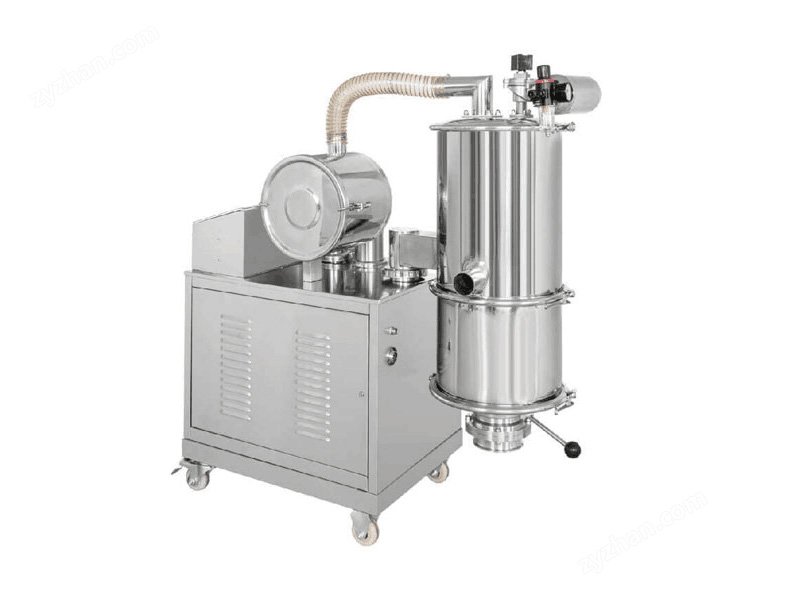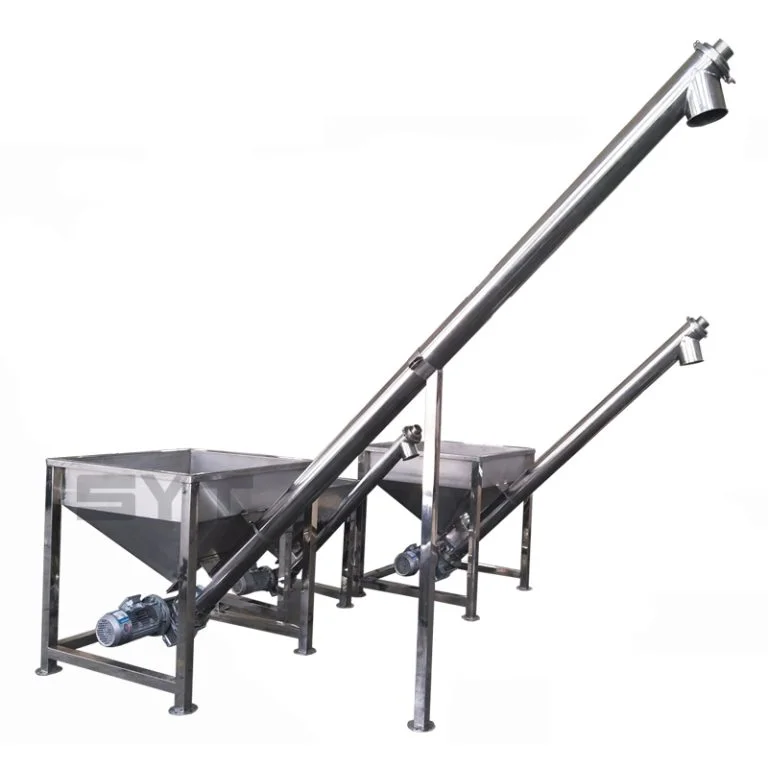what is a screw conveyor
Screw conveyors are conveying devices powered by an electric motor that drives the rotation of spiral blades to transport bulk materials from one end to the other. They can convey materials horizontally, at an incline, or even vertically. Common types include fixed trough-type or pipe-type screw conveyors. Let’s take a look at their common types.
Common types of screw conveyors
Pipe-type screw conveyors
Pipe-type screw conveyors are conveying equipment that operates with spiral blades inside a closed pipe.

Advantages:
- Fully enclosed pipe structure effectively prevents dust leakage, material moisture absorption or contamination, and odor dispersion.
- Compact structure with minimal space requirements, allowing flexible layout.
- Can simultaneously achieve simple mixing or blending of materials during conveying.
- The fully enclosed structure fundamentally prevents material spillage during conveying.
Disadvantages:
The main drawback of this equipment is its stringent requirements on material properties, which can lead to blockages, especially when conveying materials prone to adhesion, strong abrasion, fragility, long fibers, or extremely high flowability. Another significant drawback is relatively high operational energy consumption, particularly during long-distance conveying, where friction between the material, pipe walls, and blades results in substantial power loss.
U-shaped screw conveyors
U-shaped screw conveyors use a U-shaped trough with a top cover as the outer shell, allowing the spiral blades to rotate within the trough to move the material forward.

Advantages:
- The top cover can be opened for easy inspection, cleaning, or maintenance of the interior, particularly facilitating the resolution of blockages.
- Discharge ports can be installed at different positions along the trough bottom.
- The structure is relatively simple, with manufacturing and installation costs typically lower than those of tubular conveyors.
- Compared to tubular conveyors, it has slightly better adaptability for slightly larger lumpy or non-free-flowing materials.
Disadvantages:
- Even with a cover plate, gaps may still exist, leading to dust leakage, making them unsuitable for high-environmental, high-hygiene, or dust-prone materials.
- U-shaped troughs require operational and maintenance space, making them less compact than tubular conveyors.
- The maximum inclination angle is typically smaller (generally ≤15°-20°), resulting in weaker vertical conveying capability.
- Dead corners at the bottom of the U-shaped trough may cause residual material buildup.
Shaftless Screw Conveyors
Shaftless screw conveyors feature no central shaft, using thick-walled, high-strength belt-shaped spiral blades that rotate within a U-shaped trough or tubular casing, relying on the blades’ own stiffness and end supports to convey material.

Advantages:
- The shaftless structure eliminates the risk of material entanglement and blockage at the central shaft and bearings.
- Suitable for conveying materials prone to entanglement, adhesion, containing fibers, paste-like, or viscous substances.
- Can be designed with a covered U-shaped trough or enclosed tubular design to meet different sealing requirements.
- Simplified structure reduces the likelihood of malfunctions.
Disadvantages:
- Limited by blade stiffness and torque transmission,
- resulting in higher conveying resistance, especially over long distances or when conveying viscous materials.
- Blades directly bear material pressure, and highly abrasive materials significantly reduce blade lifespan.
- Higher cost: High-strength spiral blades have higher manufacturing costs.
Double Screw Conveyors
Double screw conveyors are equipped with two spiral shafts, one left-handed and the other right-handed. The two spiral shafts rotate in opposite directions, using spiral blades to push the material forward. The material between the two shafts alternates between rotating and moving back and forth between the spiral blades, preventing blockages caused by material buildup.

Advantages:
- The interaction between the two spiral blades exerts strong shearing, compression, and agitation on the material, resulting in significantly higher mixing uniformity than single-screw conveyors.
- Under the same trough width, the conveying capacity of a double-screw conveyor exceeds that of a single-screw conveyor.
- Material is forcibly pushed between the two screws, minimizing segregation or blockages.
- It is particularly effective for viscous, prone-to-clumping materials or those requiring simultaneous conveying and mixing.
Disadvantages:
- Dual drives, dual shaft systems, and more complex sealing and support structures increase costs and maintenance complexity.
- Driving two screw shafts requires greater power.
- The internal structure is more complex, potentially creating more cleaning dead zones.
Conclusion:
Different types of screw conveyors have distinct characteristics, which determine their specific applications. It is recommended to consider multiple factors when selecting a screw conveyor. As a professional manufacturer, if you have further questions or are unsure about how to choose, please contact us immediately. We will provide more professional knowledge and solutions to help you resolve issues effortlessly.latest solutions and updates.
